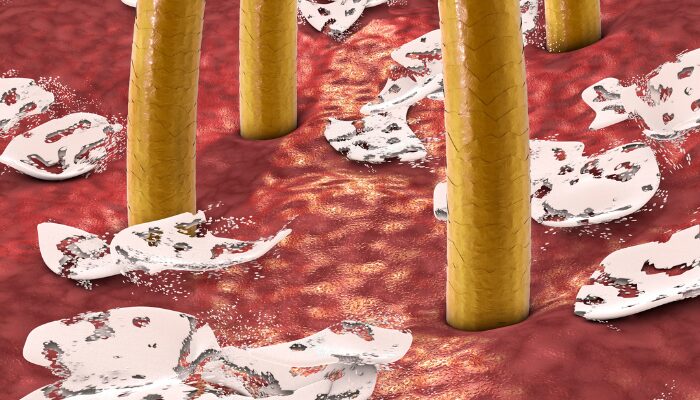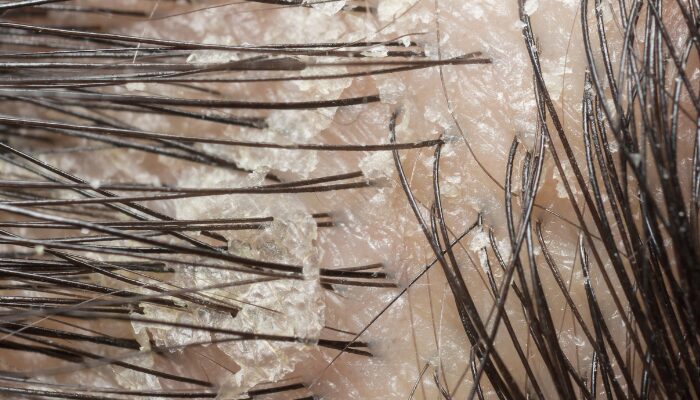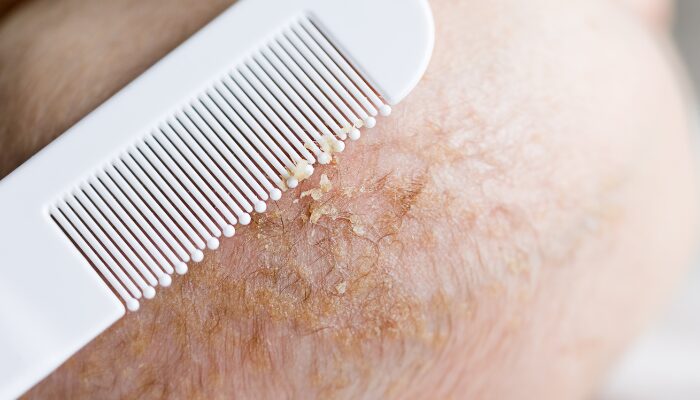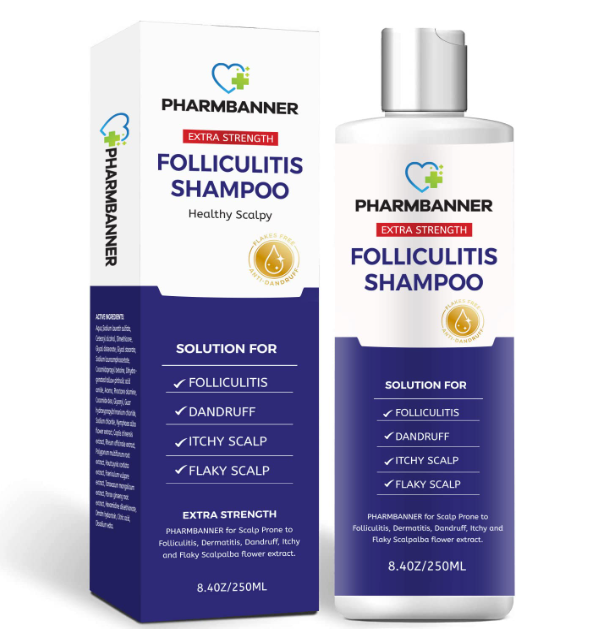Seborrheic dermatitis is a common skin condition that can cause an itchy, flaky rash on the scalp and other parts of the body. One concern that individuals with seborrheic dermatitis often have is whether the hair loss associated with this condition is permanent. In this article, we’ll explore the relationship between seborrheic dermatitis and hair loss, uncovering whether it is a long-lasting problem or if hair growth can be restored with the right treatment.
Key Notes: Is Seborrheic Dermatitis Hair Loss Permanent?
- Seborrheic dermatitis is a skin condition that can lead to temporary hair loss in rare cases.
- Hair loss from seborrheic dermatitis is usually reversible with proper treatment.
- Managing the underlying cause and promoting scalp health are crucial for hair regrowth.
- There are various over-the-counter and prescription treatments available for seborrheic dermatitis and its associated hair loss.
- It’s important to discuss potential side effects and treatment options with a healthcare professional.
What Causes Seborrheic Dermatitis Hair Loss?
Seborrheic dermatitis is a skin condition that can cause an itchy, flaky rash on the scalp and other parts of the body. While hair loss is not a common symptom of seborrheic dermatitis, it can occur in rare cases. The exact underlying cause of seborrheic dermatitis and its associated hair loss remains unknown, but several factors are believed to contribute to its development.

Malassezia Scalp Hair Loss
Changes in hormone levels, excess sebum production, and the presence of a specific yeast known as Malassezia on the skin are considered potential triggers for seborrheic dermatitis. These factors can lead to inflammation and irritation of the scalp, which may affect the hair follicles and result in temporary hair loss.
In rare cases, seborrheic dermatitis can cause temporary hair loss due to inflammation and irritation of the scalp.
While the exact relationship between seborrheic dermatitis and hair loss is not fully understood, addressing the underlying cause of the condition is crucial in managing both the skin rash and associated hair loss. Effective treatment options aim to reduce inflammation, control sebum production, and address the yeast overgrowth to promote healthier scalp and hair.
Is Seborrheic Dermatitis Hair Loss Permanent or Reversible?
Yes, hair loss that occurs as a result of Seb Derm/seborrheic dermatitis is usually reversible, if caught in time. Once the inflammation is controlled and the underlying cause of the condition is treated, hair can regrow. It is important to address the inflammation and prevent further scratching or rubbing of the scalp to allow for optimal hair growth.
Treating Seborrheic Dermatitis Hair Loss
Treatment options for seborrheic dermatitis hair loss include over-the-counter remedies, natural treatments, and prescription medications.
Over-the-counter shampoos and creams are readily available and can help alleviate symptoms associated with permanent hair loss seborrheic dermatitis may cause if left untreated. These products often contain ingredients known for their soothing and anti-inflammatory properties, such as:
- Aloe vera
- Pyrithione Zinc
- Selenium Sulfide
- Ketoconazole
Prescription options may be necessary for more severe cases of seborrheic dermatitis hair loss. A healthcare professional may recommend:
- Corticosteroids to reduce inflammation
- Antifungal creams or shampoos to control fungal growth
- Calcineurin inhibitors to promote hair regrowth
Identifying the most suitable treatment option based on the severity of the condition is essential. Consulting with a healthcare professional is advised to determine the most optimal course of action.
Natural Remedies for Seborrheic Dermatitis Hair Loss
If you’re looking for natural solutions to prevent seborrheic dermatitis hair loss and promote healthier hair growth, there are a few remedies you can try. These remedies harness the power of natural ingredients known for their anti-inflammatory and soothing properties.
One effective natural remedy is aloe vera. Aloe vera has long been used for its healing properties and can help reduce itchiness and inflammation on the scalp. Applying aloe vera gel directly to the affected areas can provide relief and promote hair regrowth.
Another natural ingredient to consider is tea tree oil. Tea tree oil has antimicrobial properties and can help reduce the yeast overgrowth associated with seborrheic dermatitis. Dilute a few drops of tea tree oil with a carrier oil, such as coconut oil or castor oil, and massage it into your scalp. Leave it on for a few hours before rinsing it out.
Please note that Coconut oil can feed Malassezia fungus due to the fatty acid chain length within the oil. Depending on the extent of your situation, some individuals may not be suitable for coconut oil. Do not over apply the coconut oil and test it to see if it suits your scalp! Other oils are available if you experience additional itching due to the coconut oil.
Other natural remedies that may be beneficial include coconut oil, apple cider vinegar, and oatmeal. These ingredients can help moisturize the scalp, reduce inflammation, and soothe irritated skin.
Note: While natural remedies can be helpful, it’s important to remember that everyone’s skin is different. What works for one person may not work for another. If you’re experiencing severe symptoms or are unsure about using natural remedies, it’s best to consult a healthcare professional.
Over-the-Counter Treatments for Seborrheic Dermatitis Hair Loss
If you’re experiencing hair loss due to seborrheic dermatitis, some of the over-the-counter permanent remedies for seborrheic dermatitis hair loss treatments can help alleviate symptoms and promote hair regrowth. These treatments typically come in the form of medicated shampoos and creams specifically designed to target scalp conditions and dandruff. The question is “seborrheic dermatitis hair loss permanent?” depends more on how soon the scales and sebum inflammation are treated.
There are several active ingredients commonly found in over-the-counter products that can effectively treat seborrheic dermatitis and its associated hair loss. These ingredients include:
- Pyrithione zinc: Known for its antifungal properties, pyrithione zinc helps control the growth of Malassezia, the yeast-like fungus that contributes to seborrheic dermatitis. By eliminating this fungus, pyrithione zinc reduces inflammation and restores scalp health.
- Salicylic acid: This ingredient helps exfoliate the scalp, removing dead skin cells and reducing scaling and flaking that commonly occur with seborrheic dermatitis. It also helps to unclog hair follicles, promoting hair growth.
- Ketoconazole: An antifungal substance, ketoconazole effectively fights the underlying yeast that triggers seborrheic dermatitis. It helps reduce inflammation, control symptoms, and restore a healthy scalp environment for hair regrowth.
- Selenium sulfide: With its antifungal and antiseborrheic properties, selenium sulfide effectively treats seborrheic dermatitis by reducing the activity of the Malassezia yeast. It also helps control flaking and itching, promoting a healthier scalp.
- Coal tar: This ingredient slows down the skin cell turnover associated with seborrheic dermatitis, reducing inflammation and relieving symptoms. It is particularly effective in managing scalp conditions and dandruff.
When using over-the-counter treatments, it is important to carefully follow the instructions provided on the packaging. Consistency is key, so be sure to use the product as directed and give it enough time to work. If you don’t see improvement after a few weeks, consult a healthcare professional for further guidance.
Prescription Medications for Seborrheic Dermatitis Hair Loss
In cases of severe or persistent seborrheic dermatitis hair loss, a doctor may prescribe stronger medication. This can include corticosteroid creams, antifungal creams or shampoos, and calcineurin inhibitors. These medications help reduce inflammation, control fungal growth, and promote hair regrowth.

Seborrheic Dermatitis hair loss solutions:-
Prescription medications for seborrheic dermatitis hair loss provide targeted treatment to address the underlying causes of the condition. These medications are typically stronger and more potent than over-the-counter remedies, offering a more effective solution for those experiencing persistent hair loss.
Corticosteroid creams help reduce inflammation and itchiness, relieving symptoms of seborrheic dermatitis. They work by suppressing the immune response that causes inflammation on the scalp. These creams are usually applied directly to the affected area and can provide rapid relief from symptoms.
Antifungal creams or shampoos are prescribed when seborrheic dermatitis is caused by the presence of a specific yeast on the skin. These medications target the fungal growth, helping to control its spread and reducing associated symptoms, including hair loss. Antifungal creams are generally applied to the affected area, while antifungal shampoos are used during regular hair washing.
Calcineurin inhibitors are another type of prescription medication used in the treatment of seborrheic dermatitis hair loss. These medications work by suppressing the immune response and reducing inflammation. Calcineurin inhibitors are available in cream or ointment form and are applied topically to the affected area.
It is important to consult with a healthcare professional before starting any prescription medications for seborrheic dermatitis hair loss. They will assess the severity and underlying causes of the condition and determine the most appropriate medication for your specific case.
Please note that prescription medications may have potential side effects, and it is essential to follow the prescribed dosage and usage instructions provided by your healthcare professional.
| Prescription Medications for Seborrheic Dermatitis Hair Loss | Benefits | Potential Side Effects |
|---|---|---|
| Corticosteroid creams | – Reduces inflammation – Relieves itchiness – Promotes hair regrowth | – Skin thinning – Increased susceptibility to infection – Localized skin reactions |
| Antifungal creams or shampoos | – Controls fungal growth – Reduces scalp inflammation – Helps prevent hair loss | – Skin irritation – Dryness – Allergic reactions |
| Calcineurin inhibitors | – Suppresses immune response – Reduces inflammation – Promotes hair regrowth | – Burning or stinging sensation – Skin redness or rash – Increased risk of infection |
Managing Seborrheic Dermatitis Hair Loss
Along with treating the underlying cause, managing seborrheic dermatitis hair loss involves preventing further hair loss and promoting hair regrowth. This can be achieved by:
- Avoiding excessive scratching or rubbing of the scalp
- Using gentle hair care products
- Maintaining a healthy scalp hygiene routine

When it comes to avoiding excessive scratching or rubbing of the scalp, it’s important to resist the urge to scratch or pick at irritated areas. Doing so can exacerbate inflammation and potentially damage the hair follicles, leading to further hair loss. If you find yourself tempted to scratch, try diverting your attention to another activity or using distraction techniques to keep your hands busy.
In terms of using gentle hair care products, opt for mild shampoos and conditioners that are specifically formulated for sensitive scalps. Look for products that are free from harsh chemicals, fragrances, and sulfates, as these can further irritate the scalp and exacerbate the symptoms of seborrheic dermatitis. Additionally, avoid using excessive heat when styling your hair and opt for gentle brushing techniques to minimize hair breakage.
To maintain a healthy scalp hygiene routine, it’s important to keep the scalp clean without overwashing. Wash your hair regularly, but not excessively, using lukewarm water and a gentle shampoo. Avoid using hot water, as it can strip the scalp of its natural oils and exacerbate dryness. After washing, gently pat your scalp dry with a soft towel, avoiding vigorous rubbing which can cause friction and irritation.
Seborrheic Dermatitis in Infants and Adults
Seborrheic dermatitis is a common skin condition that can affect both infants and adults. However, the presentation and management of seborrheic dermatitis in these two age groups can differ significantly.
Seborrheic Dermatitis in Infants
In infants, seborrheic dermatitis is often referred to as “cradle cap.” It typically appears as yellowish, greasy patches on the scalp, but can also affect other areas such as the face, ears, and diaper area.

Seborrheic dermatitis hair loss remedies for children. The good news is that seborrheic dermatitis in infants tends to clear up on its own without any specific treatment. While it may be a cause for concern to parents, it is important to remember that it is a common and usually harmless condition. Gentle cleansing of the affected areas with mild baby shampoo and regular brushing of the scalp can help loosen and remove the scales.
Some of the tips mentioned here may help remove scalp scales and build-up > Removing Scalp Buildup
Chronic Seborrheic Dermatitis in Adults
Seborrheic dermatitis hair loss remedies for adults. In contrast, seborrheic dermatitis in adults tends to be a chronic condition that requires ongoing management. It can affect the scalp, face, chest, back, and other areas with a higher concentration of oil glands.
Treatment options for chronic seborrheic dermatitis in adults may include medicated shampoos and creams, as well as prescription-strength treatments. Medicated shampoos containing ingredients like ketoconazole, selenium sulfide, or pyrithione zinc can help reduce inflammation and control the yeast growth that contributes to the condition. Prescription treatments may include stronger medications such as topical corticosteroids or antifungal creams. It is important to consult a healthcare professional for appropriate diagnosis and management.
While seborrheic dermatitis can be a persistent and frustrating condition, it is important to remember that effective treatment options are available. By working closely with a healthcare provider and following a consistent treatment plan, individuals with chronic seborrheic dermatitis can find relief from their symptoms and improve their overall quality of life.
Potential Side Effects of Seborrheic Dermatitis Hair Loss Treatments
While seborrheic dermatitis hair loss treatments can be effective, it’s important to be aware of potential side effects that may occur. Here are some of the side effects associated with common treatments:
Medicated Shampoos:
Medicated shampoos containing ingredients like ketoconazole or selenium sulfide may cause skin irritation, dryness, or oiliness. Additionally, some individuals may experience increased hair loss when using these shampoos.
Corticosteroids:
Topical corticosteroids, like creams or ointments, can help reduce inflammation and itching. However, they may also cause skin thinning, discoloration, or acne-like breakouts when used for prolonged periods or in high doses.
Antifungal Creams:
Antifungal creams, such as those containing clotrimazole or miconazole, may cause skin irritation or allergic reactions in some individuals. It’s important to monitor any negative reactions and discontinue use if necessary.
If you experience any of these side effects or have concerns about the use of these treatments, it is crucial to consult with a healthcare professional. They can provide guidance on the best approach for your specific situation and help minimize any potential risks.
So, is seborrheic dermatitis hair loss permanent?
Is having scalp seborrheic dermatitis and permanent hair loss linked? Having seborrheic dermatitis doesn’t mean permanent hair loss. With the right treatment, you can reverse the effects and promote hair regrowth. It’s crucial to address the underlying causes and manage symptoms effectively.
There are various options available for managing seborrheic dermatitis hair loss. Over-the-counter remedies like shampoos and creams containing ingredients such as aloe vera, pyrithione zinc, and ketoconazole can help alleviate symptoms, reduce inflammation, and stimulate hair growth.
In more severe cases, prescription medications like corticosteroids, antifungal creams, and calcineurin inhibitors may be necessary to control inflammation and promote hair regrowth. Consulting a healthcare professional will help determine the best course of action.
Remember, caring for your scalp and maintaining a healthy hygiene routine are vital in preventing further hair loss and promoting optimal hair growth. By addressing seborrheic dermatitis and its associated hair loss, you can regain confidence in your hair’s appearance.

FAQ
Is Seborrheic Dermatitis Hair Loss Permanent?
The number one question, is seborrheic dermatitis hair loss permanent? Hair loss from seborrheic dermatitis is usually temporary and reversible with appropriate treatment.
What Causes Seborrheic Dermatitis Hair Loss?
The exact cause of seborrheic dermatitis is unknown, but factors such as changes in hormone levels, excess sebum production, and the presence of a specific yeast on the skin can contribute to its development. In rare cases, inflammation caused by the condition can affect the hair follicles and lead to temporary hair loss.
Is Seborrheic Dermatitis Hair Loss Reversible?
Yes, hair loss that occurs as a result of seborrheic dermatitis is usually reversible. Once the inflammation is controlled and the underlying cause of the condition is treated, hair can regrow.
How is Seborrheic Dermatitis Hair Loss Treated?
Treatment options for seb derm hair loss include over-the-counter remedies, natural treatments, and prescription medications.
Are There Natural Remedies for Seborrheic Dermatitis Hair Loss?
Yes, natural seborrheic dermatitis hair loss treatment and remedies such as aloe vera, tea tree oil, and other natural ingredients known for their anti-inflammatory and soothing properties can help reduce itchiness and inflammation on the scalp, promoting healthier hair growth.
What Over-the-Counter Treatments are Available for Seborrheic Dermatitis Hair Loss?
Over-the-counter treatments for seborrheic dermatitis hair loss include medicated shampoos and creams specifically designed to treat scalp conditions and dandruff.
What Prescription Medications Can Help with Seborrheic Dermatitis Hair Loss?
In cases of severe or persistent seborrheic dermatitis hair loss, a doctor may prescribe stronger medication such as corticosteroid creams, antifungal creams or shampoos, and calcineurin inhibitors.
How Can Seborrheic Dermatitis Hair Loss Be Managed?
Managing seb derm hair loss involves preventing further hair loss and promoting hair regrowth by avoiding excessive scratching or rubbing of the scalp, using gentle hair care products, and maintaining a healthy scalp hygiene routine.
What is Seborrheic Dermatitis in Infants and Adults?
Seborrheic dermatitis hair loss prevention. Seborrheic dermatitis is common in infants and often clears up on its own without treatment. In adults, it tends to be a chronic condition that may require ongoing management.
What Are the Potential Side Effects of Seborrheic Dermatitis Hair Loss Treatments?
Some treatments for seborrheic dermatitis hair loss, including medicated shampoos, corticosteroids, and antifungal creams, may have potential side effects such as skin irritation, dryness, oiliness, increased hair loss, and other allergic reactions.




